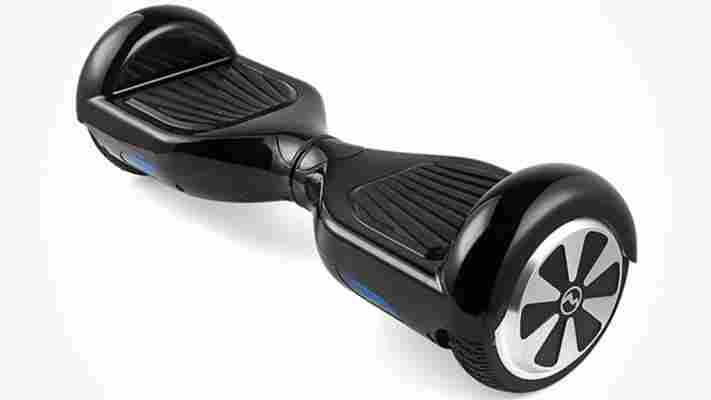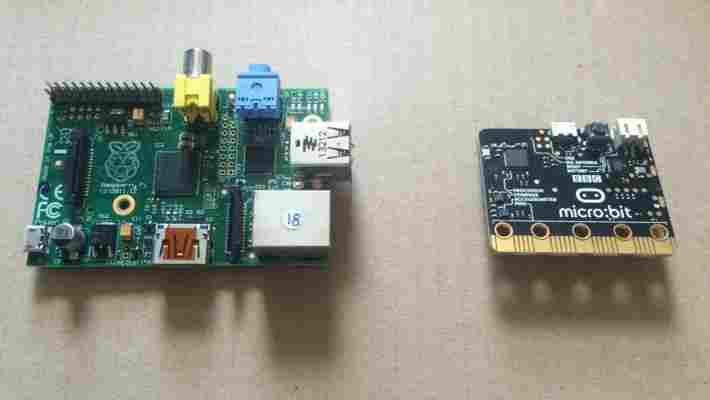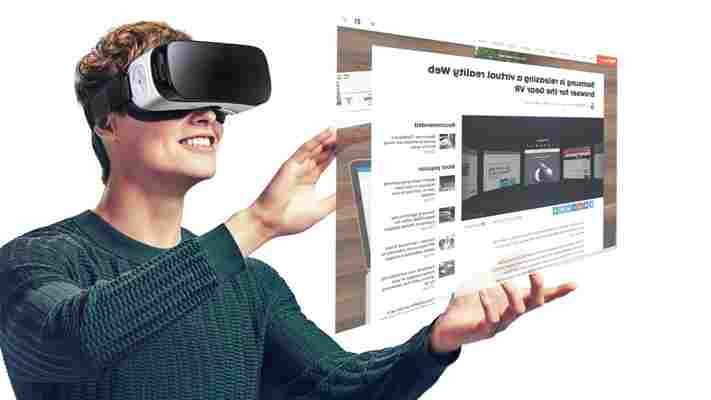Welcome to the future, where hoverboards have wheels!

Alright, technically they don’t, but the MonoRover R2 is as close as the consumer market can currently get to the future-tech dreams we’ve had since we were kids. And through TNW Deals, you can win one of your very own in our MonoRover R2 ‘Hoverboard’ Giveaway !
The MonoRover is a skateboard-sized answer to a Segway, an awesome little self-balancing transportation device that allows you to turn on a dime while sensors and gyroscopic technology help keep you upright. You’ll reach speeds up to 8 mph while rolling across town, rolling through the grocery store, away from throngs of jealous passersby and more. The MonoRover is lightweight, safe, power-efficient and, best of all, easy to learn and drive.
Winning is simple – just head to the contest page and fill out the online entry form with your valid email address, and you’re automatically entered.
Share the giveaway on Twitter, and once you get some friends to enter, you’ll receive additional entries to win. One registration per person please!
➤ Get this deal
Hands on with the BBC’s child-friendly microbit: if you’re an adult you might struggle
Never before can I say I’ve been able to feel the brimming excitement of 1 million 10 and 11-year-olds across the UK – until today – as the BBC microbit finally landed on my doorstep, along with hundreds of schools .

This really is a landmark for the BBC, literally giving away this many computers to so many kids, and it’s one that could transform the future of digital skills in the country, so it’s hard not to get a bit swept up in it all.
The microbit is exactly what it promises, truly micro, making the Raspberry Pi 1 Model B look positively ancient in pocket-sized personal computing terms.
It certainly looks pretty cool and is really stripped back compared to its older cousin, luring me into feeling it’ll be even easier than Pi to use.
Below, you can see the brains of the operation, including a micro-USB that you connect straight up to your computer to get going, and which many kids will be familiar with as it comes as standard for many smart devices.
It also has a compass, accelerometer and bluetooth antenna – making it great for IoT projects – as well as a battery pack with a connector so you can take it out and about once you’ve flashed your code to the computer.
On the front, it has an LED screen, which is pretty novel as it gives immediate written feedback to the user that microbit is alive and ready to play.
There’s even a secret Snake game you can activate once you know how.
It also has two buttons on either side of the LED grid, three external sensors that can be input or output, digital or analogue, plus a 3V and a GND output, all of which you can program using the editor programs on the ‘create code’ section of the BBC’s Microbit website .
Today, that’s a choice of four simplified programming languages, most of which use blocks to introduce you to the systematic nature of coding.
No doubt teachers will spend some time introducing kids to the different components that make up a microbit, including how the device communicates with your code. If the Quick Start Guide for Teachers hadn’t come in my box, I might be a bit lost.
To test out whether the simplicity is carried throughout, I went straight in for the Code Kingdom tutorial and I honestly needed an adult after about three seconds.
After eventually working out what was going on and finishing up the first task, I concluded that it was best not to run before I could walk.
Instead, I picked up a ‘beginner’s project’ from the Coding Tutorials handbook – creating a burglar alarm for my microbit using Microsoft Block Editor, the internal accelerometer, some crocodile clips for my circuit, and of course, the vital buzzer.
These last two were handily provided by the Beeb, but kids will have to get teachers involved here.
Experienced coders will be totally familiar with all of the concepts pulled together under the Microsoft Block Editor menu options on the far left. Each contains a limited set of possible commands, which you can customize for your project.
Once the code it complete, you ‘compile’ the file to download it, then drag and drop it onto your microbit, which should show up like a USB stick would in your computer system menu.
I definitely had a couple of minor ‘WTF is it telling me to do?’ hiccups, no doubt because the writers of the guide and the platform can’t make it exactly intuitive for every single user – ie. idiots like me.
But in just half an hour – and without any tears – I’d set a trap for any potential microbit thieves.
As with any project that aims to get kids coding, some will immediately ‘get’ it and need little guidance or even encouragement.
I do not envy the people that have to get up to 30 kids of mixed abilities excited about this all at the same time, but it is certainly a worth task.
And even if you aren’t a 10-year-old kid in the UK, you will soon be able to get your hands on a microbit, so keep an eye out for availability and pricing.
➤ BBC microbit
VR Web browsing might ultimately be one of Samsung and Oculus’ best tricks
Of all the things to be excited about regarding virtual reality – gaming, 360-degree movies, and all sorts of cool new experiences – the last thing I expected to intrigue me is a virtual reality Web browser.

Yet after trying Samsung’s new browser made for the Gear VR, I think it might ultimately end up being one of the platform’s most useful tricks – even if it’s extremely limited at the moment.
It’s like Web browsing in ‘Minority Report’. Tabs are presented as floating windows around you, and you simply shift your head slightly to look at another tab. In fact, it feels a lot like a multi-monitor set-up, except you probably can’t afford or have the space for five 40-inch monitors.
Navigating around is relatively simple. You scroll using the Gear VR’s touchpad (I didn’t have a game controller with me), and URL and search input defaults to dictation.
Voice recognition works really well, but you can also type in an address by moving your head around and tapping on the touchpad. That sounds more cumbersome than it actually is, since Samsung’s motion tracking is excellent (think typing with a mouse or stylus). Not ideal, but it works.
One practical benefit of having the browser is that you can use it to watch 360-degree videos on YouTube; the standard YouTube app -which now supports Google Cardboard – doesn’t work in the Oculus OS layer, but the Web interface provides an essentially identical experience.
Everything runs surprisingly smoothly too, despite the extra rendering my S6 Edge+ has to do for the 3D interface.
The app itself is pretty barebones in terms of functionality at the moment though. You can’t import bookmarks, but there’s no way to adjust settings like cookies or default to using desktop sites. My bluetooth keyboard didn’t work while browsing either, which is a shame, as it would have been nice as a distraction-free writing interface.
The pixel density on the Gear VR is also too low for what we’ve come to expect from our devices for sharp text- it’s usable, but feels like working with 1024×768 panels.
But despite all those qualms, the possibilities are still enticing. Once the specs, features, and peripheral support have caught up, imagine being being able to make your computer screen any size you’d like and having as many of them as you need. Perhaps even better: you could easily turn off a distracting environment to zone into a task.
Right now, browsing on the GR VR is more of a nice-to-have feature than something that could change the way you work. But if it’s any indication of what’s to come, then the future looks pretty awesome.
